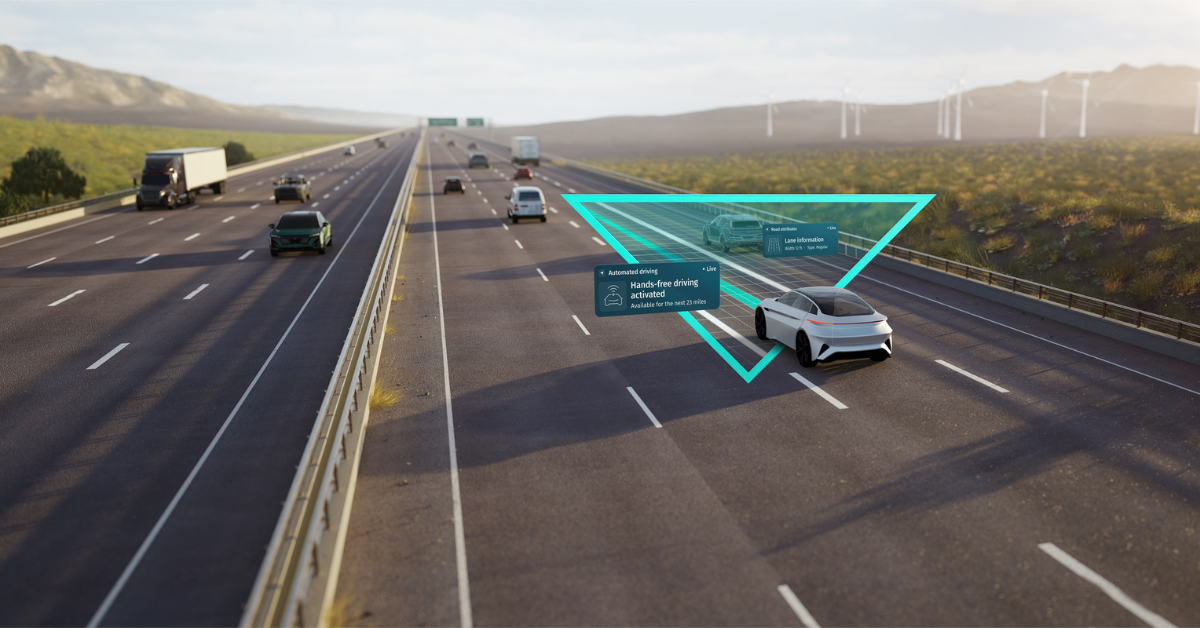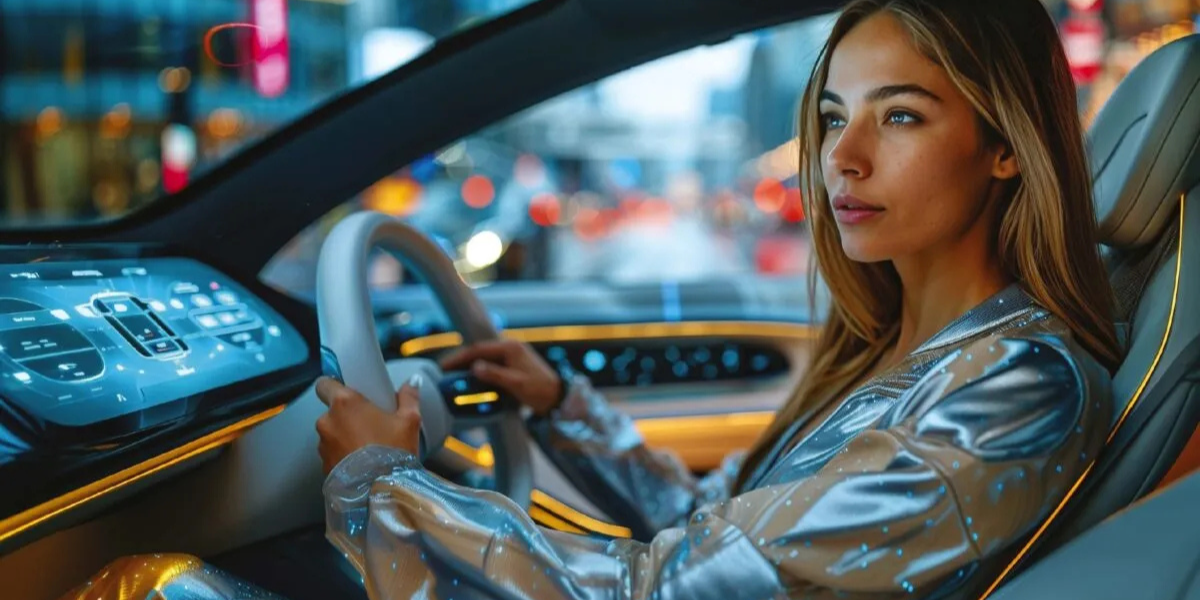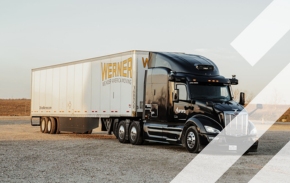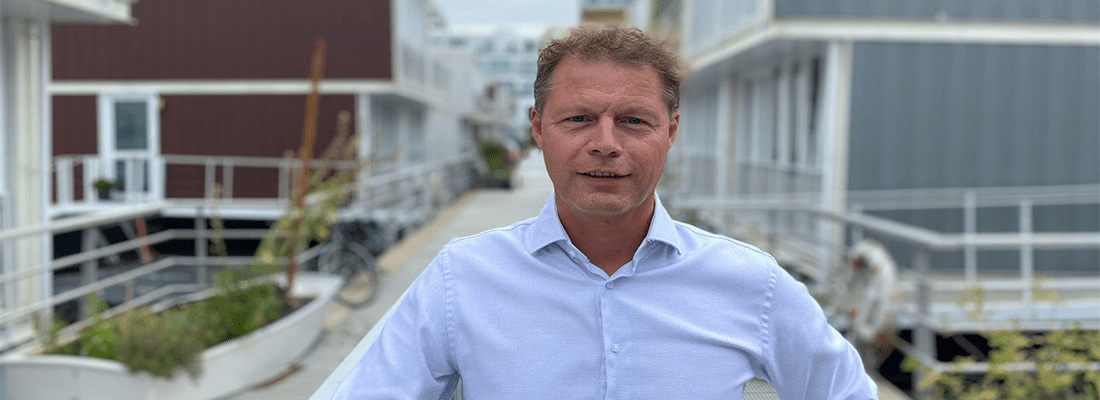The impact of COVID-19 on automated driving
During the very first webinar of Intertraffic moderator Carlo van de Weijer spoke to Aurélien Cottet of Transdev, Paul Speirs of PTV and Chris de Veer of Amsterdam Metropolitan area on the impact of COVID-19 on the mobility industry. Due to sheer lack of time many questions from our international audience remained unanswered. We asked Chris de Veer of Amsterdam Metropolitan Area to answer a selection of them.
Chris de Veer is sector manager smart mobility at the Province of North Holland and he is representative advisor of Amsterdam Metropolitan Area. “I have been working in traffic and mobility my entire career. I once started at the Rijkswaterstaat (Dutch Department of Public Works) and now I work at the Province since 8 years. My job is to look ahead and advise on smart mobility future projects. I search for the best cooperation between local and regional parties. Chris de Veer: ‘Together we are aiming to make mobility clean, safe and smart.’
Question 1:
What is smart mobility according to you?
‘Interesting question, which I think everyone will answer differently. I think it is much more than the literal meaning of organising mobility in the smartest way. It is not all about data or technology; but also about the way urban planning and mobility is combined or about organising public transport in a way that we improve seamless travelling. Or even help elderly cross the street in a safer and more comfortable way. To me it is to make the entire infrastructure system smarter.’
‘It is indeed a very broad subject. In our work there is a tendency to focus on specific parts of the mobility system such as infrastructure, parking or public transport But if you want to change an entire system, you have to challenge yourself in thinking broad.’
‘It could well be that we say goodbye to the term smart mobility soon. It is no longer a hype; it has become part of our society. Smart technology has even increased our expectations. When our train is in delay and we are informed a little bit later than expected, we get irritated already.’
‘For the Province smart mobility means smart, safe and environmentally friendly. It is about what we want to get out of it, our goals. Smart: optimised mobility for everybody in such a way that the whole system benefits; Environmentally friendly: zero emission; Safe: less accidents. In my opinion we should strive for zero traffic deaths, zero traffic delay and zero emission. But that is not easily accomplished, at least not in the short term.’
Question 2:
Will our experience with working from home lead to a continued lower level of traffic jams or will we step back into our cars again?
‘With the outbreak of COVID-19 we experienced cleaner air, less traffic congestion. Whereas right now, the levels of car use seem to be back to where we were before the outbreak. The use of public transport is still very low as a result of the fear of contamination. I do think people now understand they can work at home for (part of the) day. Also the employers seem to have gained more confidence in working from home. This means people don’t have to travel so much and do not have to travel during peak hours. I really hope that after corona we keep on questioning ourselves whether it is really necessary to travel by car or during rush hour. I also hope we use our navigation more often to tell us which is the best route to take so that people will no longer travel by default.’
Question 3:
How are road operators preparing for autonomous driving and what is the impact of COVID-19 on scheduled trials and projects?
‘Before I answer that question I think it would be good to explain the (SAE) levels in automated driving. These levels are commonly accepted and used throughout the world. Level 0 automation means that the driver is totally in charge and there is no or very limited driver support. On the other hand there is level 5 in which the vehicle is absolutely autonomous and there is no human necessary to drive the vehicles. In between there are ascending levels of automation, such as advanced driver assistance systems and fully automated vehicles on dedicated lanes.’
‘Before the outbreak of COVID-19 we did an impact study on the expected changes when we reach level 4 or 5 in automated driving in the Province of North-Holland. Some of the outcomes are:
- If we reach that point (level 4/ 5), people will switch modes. Less public transport and less biking. Maybe order a taxi more often. Depending on the price (but the price can be low because of there might be no driver involved).
- If people share vehicles you need less vehicles.
- However, the increase in demand will increase traffic congestion.
- Public space will become an issue. What to do with ‘empty’ rides? Where to park?
- People will question whether they want to live in a city of constant automated ‘cans’ passing by.’
‘Optional solutions are:
- Promote biking and walking
- Promote / incentivize vehicle sharing
- Pricing
- Etcetera
‘The impact of automation of cars is not something in the far future. Gradually, cars get more automated (hence the different levels automation). Already, a lot of cars use ADAS (Advanced Driver Assistance Systems) such as keep your lane, (adaptive) cruise control, automated breaking, etc. What is the impact of these systems on our infrastructure in the Province? So we did a test case with a keep-your-lane-system on provincial roads. The first results were actually frightening. In a number of cases the car did not see the lines and the driver had to correct otherwise the car would have ended up next to the road. Questions now rising are: How do we improve our roads or traffic management? Do we need better lines or sensors in the road?’
‘Another example of the things we do with vehicle automation is the test we are doing with Fiat Chrysler where vehicle automation is tested in combination with traffic lights. And with Nissan were we test controlled driving from a distance. As the yearly Autonomous Vehicles Readiness Index (AVRI) shows, the Netherlands is top of the bill when it comes to testing possibilities. In the province Noord-Holland we offer testing facilities for practical trials in real life circumstances. Together with the RDW we make sure that it these tests can be performed safely. Our infrastructure and the knowledge we have built up in the area are ideal for this.’
‘However, in the short term the outbreak has obviously slowed down all these tests. We can only test live on street and in a realistic scene. During the lockdown there was just not enough traffic to be realistic. Even though these tests were abruptly halted, we had enough on our hands. Because we wanted a smart restart of our traffic once the intelligent lockdown was lifted. For instance, we wanted pedestrians and cyclists to be able to maintain 1,5 metres distance also at very busy crossings. So we’ve adjusted the traffic lights around schools and busy places so that slow traffic has more green light.’
‘In the long run I am not sure whether this outbreak will slow down automation down or speed it up. Maybe after Corona the decrease in public transport will last and there will be an increasing demand for (shared) vehicles or taxis. In America there has been a debate that robotaxi’s (such as Uber are using in a number of cities) will disrupt public transport. An unwanted effect of this is an increase in congestion and worsening traffic flows. This is why we should motivate people to go cycling or walking and work from home more often.’
Question 4:
Are you yourself a believer of electric driving?
‘Personally, I think it would be cool to go to electric driving because it is better for the environment, but only when electricity is generated in an environmentally friendly manner. Another effect regarding the environment is that vehicles are getting smaller and may therefore become more disposable. Just like computers today are replaced every 2-3 years. They could become more unsafe and even worse for the environment. These are two elements we must take into account. Other than that I think electric driving has the future.’
Question 5:
What did you learn from this outbreak?
‘People are much more open to change than we would have thought. Isn’t it bizarre that the government tells us to stay at home and we do it? It shows that people must understand the need and understand clearly what the importance is. They have to understand the sense of urgency. Plus equality is necessary: it should be the same for everyone. We need to focus more on how mobility can be used. That applies to all modes of mobility, also in the logistics area.’
‘A concept such as Mobility as a Service (MaaS) can help in a way that it offers a mobility solution to people and not just a transport vehicle. For MaaS to be successful, it has to be easy to use and data must be readily available to everyone in order to provide insight into their position. We need to give people the option: choose a shared bicycle at a reduced rate because you save emission and you even arrive X minutes earlier. Something else we need to work on is hubs in which people can easily change modality.'
‘Automated driving might be the missing piece in the MaaS puzzle. Because it reduces the cost of shared mobility and can reach much further than traditional public transport and bikes. Together with other shared systems in well placed hubs around and in metropolitan areas, MaaS can become a viable option for the majority of travellers. So you need to bring all these shared modes and public transport together in one system, make them accessible through a number of apps and make the payment and the switch to another mode as comfortable as possible. I think automation will generate a need.’




